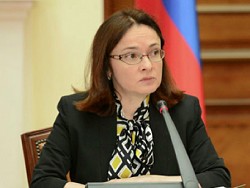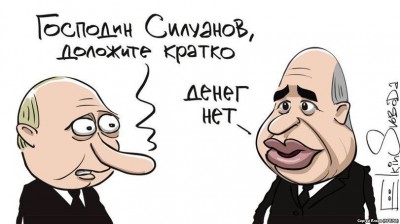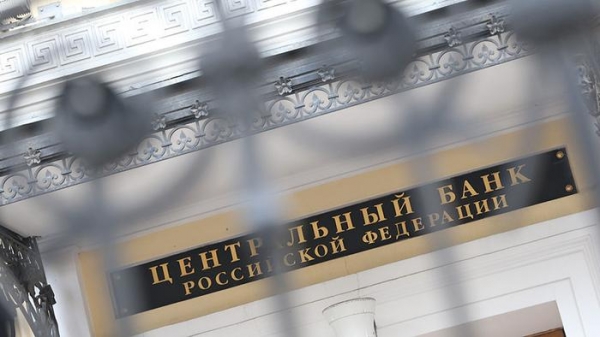
Last weekend marked three years since the post of Chairman of the Central Bank was nominated Elvira Nabiullina. First on her nomination before it is reported by “Izvestia”. Three years later the editors decided to analyze what cost the recovery of the banking market, which has become a hallmark of the financial “iron lady”.
As calculated specially for “Izvestia” rating Agency “Rus-Rating”, it cost about a billion (955 billion) rubles. And according to the analyst of the company EXANTE Eugene slavnova, more — more than 1.1 trillion roubles. As indicated by “Rus-Rating”, in order to estimate the amount of spending, you first need to consider the number of revoked licenses. High pace, stress in the Agency, are, perhaps, one of the main features of the current policy of the Central Bank. During the leadership of Elvira Nabiullina of the Central Bank revoked the licenses of banks 208: 27 — in 2013 and 73 in 2014, 90 in 2015 and 18 in 2016, leads the calculations Evgeniy Slavnov. And adds that it is comparable to performance achieved over the 11 years of activity of its predecessor, Elvira Nabiullina, Sergei Ignatiev.
“Of course, part of current ratings can be attributed to the difficult current situation in the country and in the sector, but if you look at the causes of revocation of licenses, it becomes clear that the Central Bank carries out consistent work to withdrawal from the market of banks involved in dubious operations. Thus, about half of the banks lost their license to Mrs. Nabiullina, lost it for this reason”, — “Rus-the Rating”.
Therefore, the present cleaning process of the market is very different from that which we observed when Sergey Ignatyev, emphasize in “Rus-the Rating”. Then in receivership returned 90% of the funds in the current situation the Central Bank was forced to deal with huge “holes” in equity. Like I told him in February the Chairman of the Central Bank Mikhail Sukhov, the “hole” in the capital of banks, which for the last 2.5 years had their licenses revoked, amounts to 1.2 trillion roubles.
Moreover, payments to depositors-natural persons are carried out at the expense of the Deposit insurance Fund. Since the beginning of 2014 the total amount of payments amounted to 705 billion rubles, according to data from 1 March 2016 to the Agency for Deposit insurance. Moreover, 250 billion roubles amounted to a loan by the Central Bank, since the Fund last fall ended its funds sufficient for compensation to injured investors.
Licenses, however, spoke not at all banks. The second distinguishing feature of the leadership of Elvira Nabiullina experts believe a large-scale reorganization. According to the DIA on 1 December 2015 (latest available data), to reorganize under the new head of the Central Bank sent banks a 25, on what was spent about 786 billion, of which about 770 billion were provided by the Bank of Russia.
“At the same time banks was returned slightly less than 61 billion rubles. Thus, the current net cost of Bank rehabilitation are about 725 billion. Despite the fact that the allocation of funds for sanitation implies their return, be aware of the long terms of such loans, on average about 10 years, so current rates of return so low. At the moment to predict the final recovery rate is useless: no one knows how to change the overall situation in the country by 2015,” — noted in “Rus-the Rating”. And Evgeniy Slavnov advises to pay attention to the loss of profit from those funds, which the Central Bank allocates the cost of the bailout of the banks.
— The total volume of credits granted for a term of 10 years at an interest rate of 0.51% per annum, is about 500 billion roubles. Based on these figures, subject to full repayment of Bank debt to the Deposit insurance Agency, the Agency will earn in these loans is just about 13 billion rubles. Thus, if the Central Bank deposited these funds through REPO transactions, for example, the resulting income would be much bigger: even with careful calculation using the REPO rate at the beginning of 2014 (6.5 per cent) in 10 years, the Central Bank would earn about 181 billion rubles. And 361 billion rubles at the current rate repurchase agreements (12%) — leads their calculations Evgeniy Slavnov.
As told the interlocutor of “Izvestia”, close to the Central Bank, the amount of about a trillion rubles appears in the internal calculations of the regulator. It recently indirectly confirmed Mikhail Sukhov, who said that the volume of attracted credits the Deposit insurance Agency to replenish the Fund and Bank rehabilitation in the near future will exceed 1 trillion rubles. However, he also confirmed that the financing of the Fund and the bailouts at the expense of additional issue. However, note in the Central Bank, it does not have a significant impact on inflation.
Agrees with this opinion and experts. According to the chief economist of “Rus-Rating” Anton Tabaha, in a crisis situation, the main part of the issue is plugging the holes associated with delay, and for the recapitalization. If no issue, then the banking system could fail. And occurred emission, the economist, has not led to a substantial increase in inflation, as it is more influenced by non-monetary factors, as well as the ruble.
Loans, which the Central Bank gives the cost of the bailout of the banks, not entirely belong to QE, if at all, are — says the Director of research and Analytics PSB Nicholas Kashcheev. — They are given on a returnable basis and are needed to pay contractors and to improve the balance sheet, to build reserves. That is largely — in fact, immediately return the money to the Central Bank.
However, adds Nikolay kascheyev, the money that the Central Bank gives the payment to the depositors (through the DIA, for example), can be attributed to emission from classical effects. But according to him, 250 billion roubles — a large sum insufficient to influence inflation.
— In addition, a large portion — usually 80 percent — of paid DIA depositors leave money in the banks-agents, that is, the money still preserved, minimizing the effects of inflation — said the representative of the PSB.








